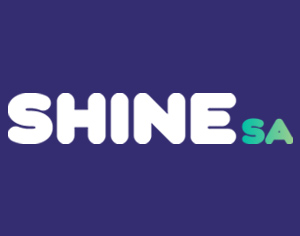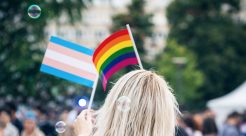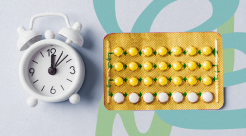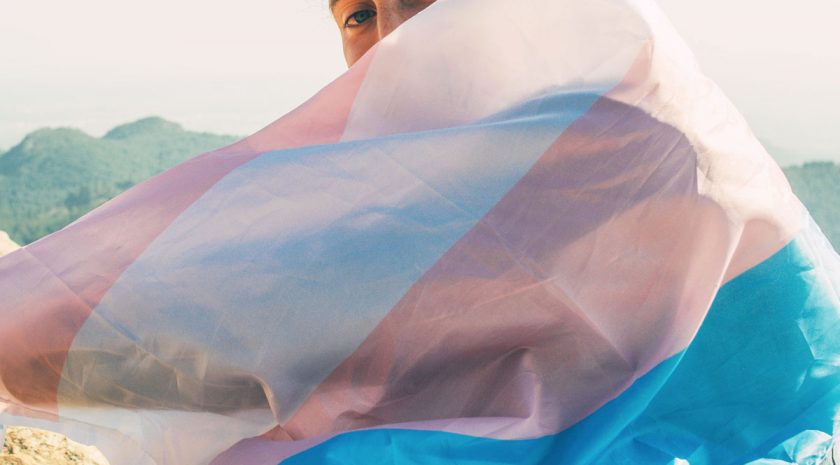
What is gender diversity?
Gender diversity is an umbrella term that is used to describe gender identities that demonstrate a diversity of expression beyond the binary ‘male’ or ‘female’, ‘man’ or ‘woman’.
From birth, most people are categorised and labelled as either ‘girl’ or ‘boy’. This labelling is done by doctors, family members, teachers etc. who make assumptions about our gender identities. As children we aren’t usually given much room to explore or challenge these concepts at least until our adolescence or later into adulthood.
Just like many experiences we have in life of being incorrectly pigeonholed or put in a box of ‘this’ or ‘that’, many people don’t identify with or fit neatly into categories of ‘male’ or ‘female’.
A common mistake that is made when discussing the concept of gender is that sex and gender are the same thing. Gender, sex and sexuality are all separate concepts.
In short, gender is a social concept whereas sex relates to a person’s biological make up. These concepts will be discussed further below.
Terms to get you started
Gender diversity terms
Cisgender – Describes a person who identifies with the gender that is presumed of them at birth (for example, someone who was presumed female at birth and identifies as a woman).
Cisnormative – The presumption that being cisgender is the norm and thus, anyone who falls outside of this category is abnormal and awarded less privileges.
Transgender or trans – Describes a person whose gender identity differs from the gender they were presumed at birth (for example, someone who was presumed male at birth and identifies as a woman). Nonbinary people can be included in this label if it feels right for the individual. Some nonbinary people do not identify as trans and that’s okay too!
Non-binary – An umbrella term representing those whose gender identity is neither man nor woman but rather somewhere in-between; fluid or fixed, or off the gender spectrum all together (see, for example, agender).
Body diversity terms
Intersex – Anyone born with variations in their physical sex characteristics meaning they don’t neatly fit into the binary sex categories of male and female.
Endosex – Not intersex, meaning aligning within the categories of male or female.
Sexual diversity terms
LGBTIQA+ – Lesbian, Gay, Bisexual, Transgender, Intersex, Queer, Asexual, + (the plus sign acknowledges the diversity of the rainbow community and the ever-expanding identity terms within it).
Queer – A term that can be used to broadly describe their sexual and/or gender identity as a way of sharing that identity without sharing a specific label. Some people may be harmed by this term due to it’s historical use in a negative way.
Note: How people who are gender and/or sexually diverse identify is very personal and varies between individuals. The above definitions and descriptions are a guide only and it’s respectful and best practice to check with a person and reflect the language they use.
Gender
The way that most people have developed their understanding of gender has been through a cisnormative, heteronormative lens. That is, we grow up and are surrounded by a binary that assumes certain things are ‘normal’ e.g. you will be either a girl or boy and you will be attracted to the ‘opposite’ gender. Our cultural understanding of gender is a social production of behaviours which have commonly been associated with those that are ‘male’ and ‘female’.
This has meant that transgender, gender diverse and intersex people (as well as the LGBTIQA+ community more broadly) have been excluded from conversations on gender and sex as they do not fit this binary lens.
Society’s rigid, culturally produced categories of ‘male’ and ‘female’, ‘man’ and ‘woman’ have meant that those who do not align within this binary are viewed as non-existent or strange.
Gender as a social concept can be broken down into three separate parts: gender expression, gender identity and gender roles. As societal and cultural ideas around gender change over time, so do people’s conceptions of these three categories.
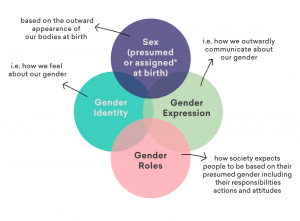
Gender expression
Gender expression is an external concept which explains the way in which we are interpreted by other people. This can relate to how we choose to cut our hair and/or dress. It can also relate to how we speak, move, sit, or stand. This doesn’t mean that those who wear dresses can only be girls, and those with short hair can only be boys. Rather, it’s part of a general visual understanding of gender.
Gender identity
Gender identity relates to how we feel about our gender. In philosophical terms, gender is a quale: a subjective conscious experience occurring only in our own minds. Our gender might align with the gender with which we were assigned or presumed at birth based on our perceived sex, and it may not.
Gender diversity can be observed through many cultures and throughout history. For example, Brotherboys and Sistergirls is a term used by Aboriginal and Torres Strait Islander people to represent members of the trans community. Whilst there are many examples of gender diversity and fluidity across cultures it’s important to acknowledge the influence of colonialism on gender.
Gender roles
Gender roles relate to how we as human beings are taught to perform tasks in relation to our gender, roles to help the home or contribute to the community as a whole. Historically, being a woman meant that someone was ‘not a man’ – this meant they could not earn money or vote. These strict gender roles have since changed in many places around the world, however, understanding gender roles as a single component of gender, helps us to understand the significant yet changeable influence that society has on the creation of gender.
Sex
Although it makes it easier for us to put things into categories, just like gender, sex can’t be explained in a binary sense. Biological sex is determined by a mix of hormones, anatomy, and chromosomes; and these can be expressed as a mixture of what has traditionally been labelled as male and female sex traits within the one person. See the below diagram as an example.
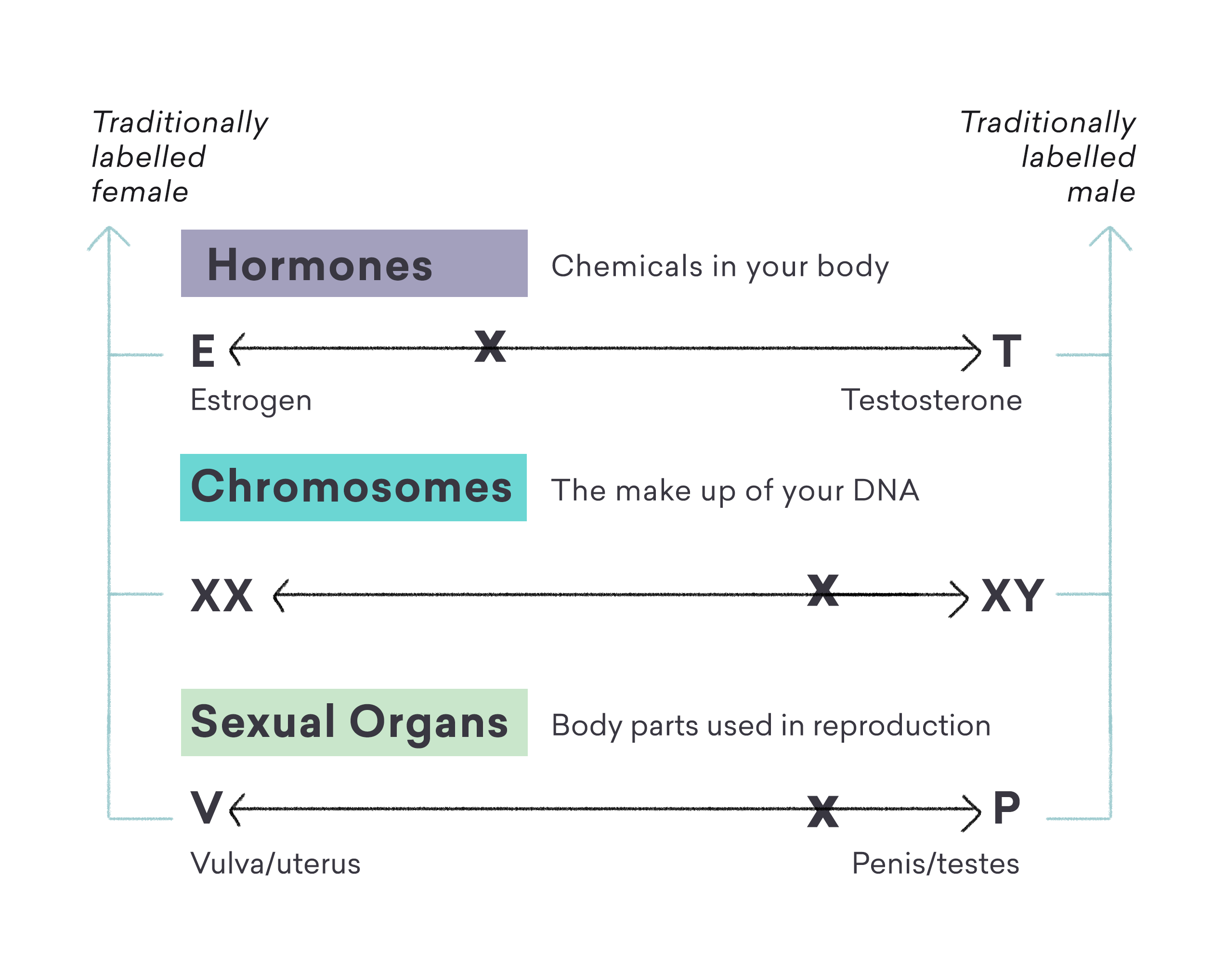
Intersex is an umbrella term that refers to anyone born with variations in their physical sex characteristics meaning they don’t neatly fit into the binary sex categories of male and female. Intersex people can have variations in any number of their physical sex characteristics such as their chromosomes, hormones, internal reproductive anatomy and external genitalia. Intersex is not a third sex necessarily but rather a term to identify over 40 different biological sex variations outside of the binary.
So, just how common are intersex people?
Intersex people are estimated to make up 1.7% of the population which is roughly the same percentage of people with green eyes or natural red hair. It’s possible the number could be higher.
There is some overlap between trans and intersex experiences, particularly in relation to surgical interventions. The notable difference which separates these experiences, however, is agency. Intersex people usually have very little, if any, autonomy over their bodily decisions and medical management, as doctors regularly perform ‘normalising’ operations on intersex people, often during infancy and early childhood, who are not in a position to give informed consent.
In contrast, trans and gender diverse people are often rejected for surgeries or other forms of medical intervention such as Hormone Replacement Treatment (HRT), despite their personal desire for treatment. In other words, while intersex people are sometimes surgically altered against their will, trans and gender diverse people are sometimes denied surgeries which they explicitly ask for. Intersex, gender diverse and trans people share the common experience that is a lack of choice based on what is considered ‘normal’ by society’s standard.
Regardless of how you feel in your gender identity, whether you are an ally, a family member or friend, unsure or sure – you are worthy of love, safety, respect, and adequate health care.
For more information on what it means to be trans, gender diverse or intersex, visit the following pages:
- www.trans101.org.au
- www.transhub.org.au
- www.ihra.org.au
- www.interactadvocates.org
- www.minus18.org.au
- www.transhealthsa.com
This resource was put together by our Gender Connect Country SA team.






